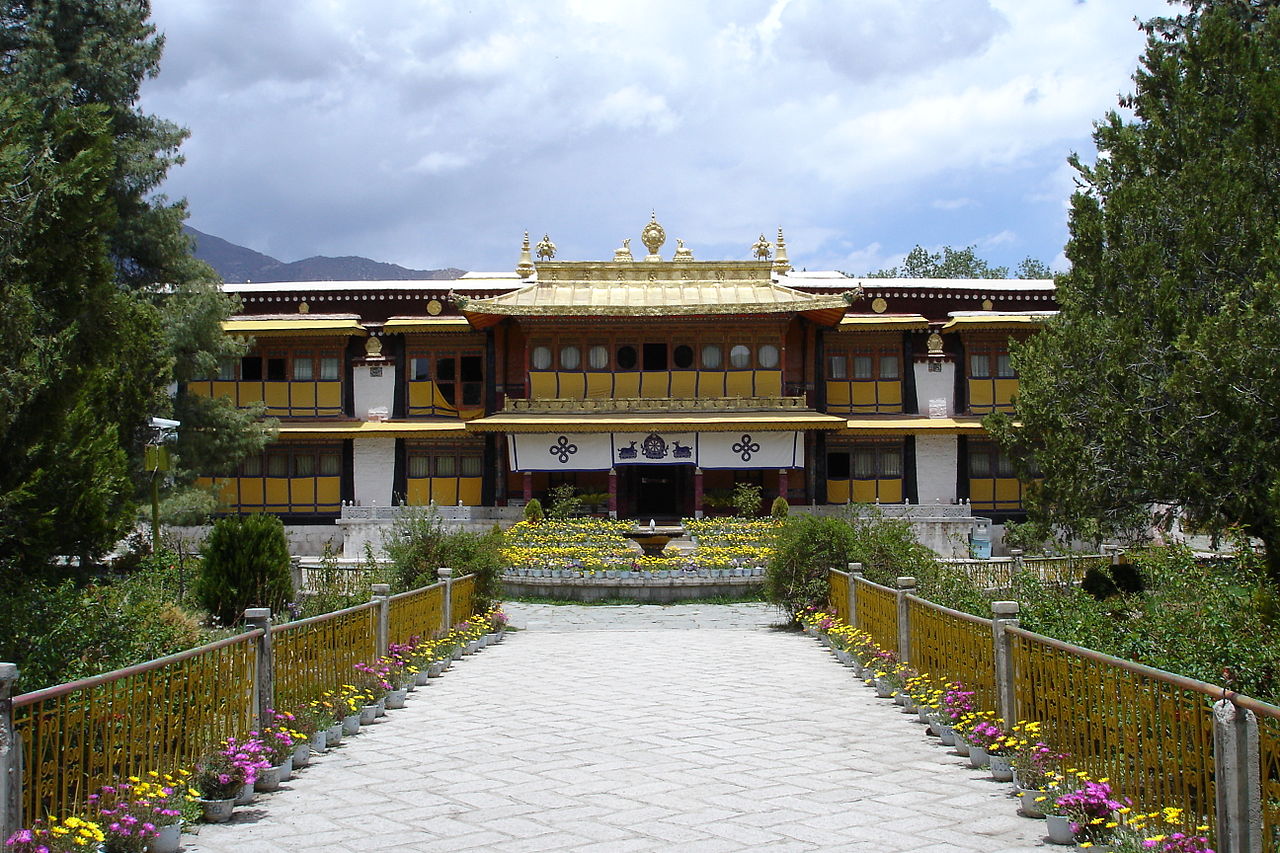
Located to the west of Lhasa, the Norbulingkha Palace was established during the time of the Seventh Dalai Lama, who selected the location based on natural springs onsite believed to benefit his health. Construction on the first building of the complex, Uyab Podrang, was completed around 1755. Over time, subsequent Dalai Lamas, who came to use Norbulingkha as summer residence (the Winter Palace was located in the Potala's White Palace), commissioned additional buildings. Norbulingkha contains palace buildings, government buildings, and the opera grounds where outdoor performances are held.
In March of 1959, Norbulingka was an important site of resistance to Chinese occupation. Crowds of Tibetans surrounded the palace in an effort to guard the Fourteenth Dalai Lama, who was inside the complex, having declined an invitation to attend a performance at the Chinese military camp. When the palace was subsequently shelled on March 17th, the Dalai Lama and a small party escaped to India through Lhoka, stopping at Lhuntse Dzong, where he repudiated the 17-Point Agreement.
Today, Norbulingkha, with its large gardens, fine buildings and art, outdoor performances and summer festivals, is a popular tourist site functioning as a museum. A significant rehabilitation effort began in 2003. It joined the Potala and Jokhang as a UNESCO World Heritage Site in 2001.